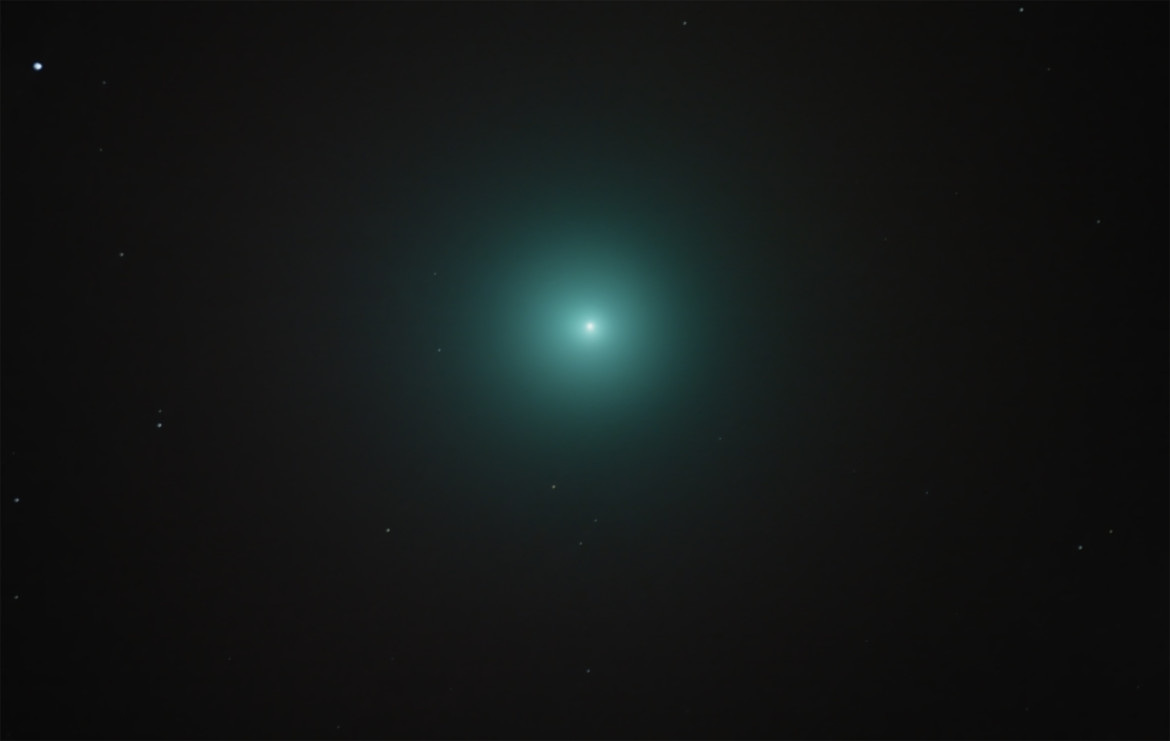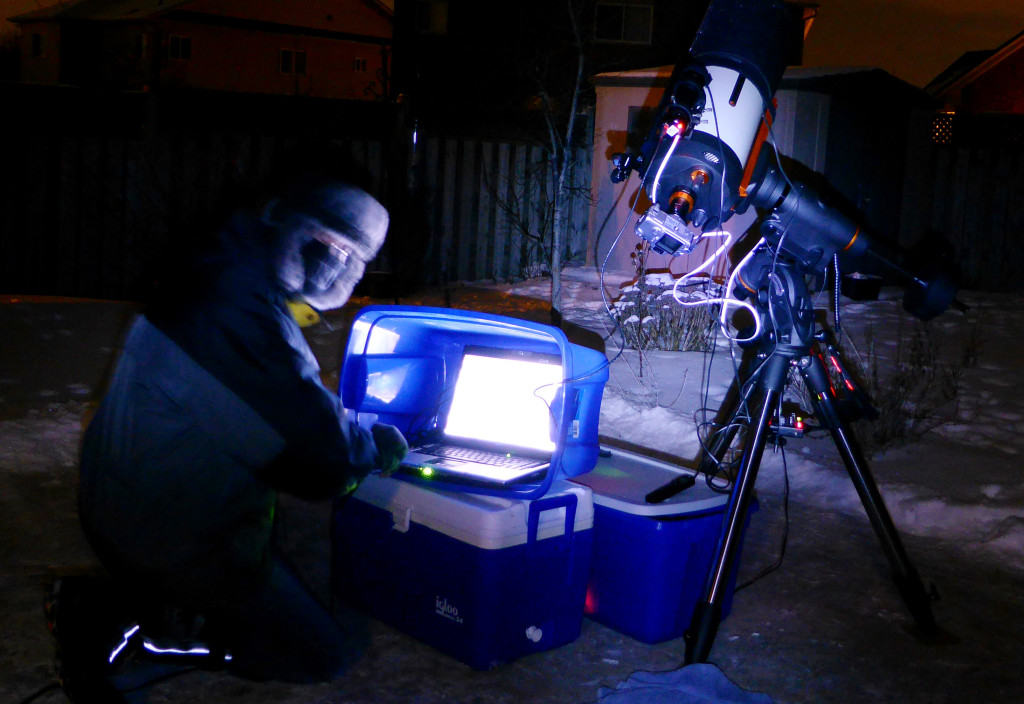With -15° degree weather astrophotography in January is not for the faint of heart! However, with so few clear nights these past few months it’s worth braving the elements for a personal encounter with comet C/2014 Q2 (Lovejoy). Lovejoy is now naked eye visible but its very faint and hard to spot unless you know exactly where to look. From my somewhat light polluted skies in Dundas the comet can be seen as a tiny, dim dot right of Orion. With a telescope the view improves and using my 8″ scope Lovejoy can be seen as a fuzzy patch but unmistakable comet. With the wonders of auto-guiding, digital photography, and stacking software more detail can be explored through the photons captured by CCD sensor.
The featured photo was shot at f/10 using a Canon XT with 45 second exposures over 52 raw files at ISO800 totaling a 39 minute exposure. The green glow of the comet is easily brought out with just a little digital processing. If I over process the image a faint tail can be seen but then far too much noise is visible, so with my current level of experience dialing back a little produces a more pleasing final photo.
Lovejoy is moving, and moving fast! Through my f/10 lens it can be seen traveling relative to background stars from one 45 second exposure to the next. For the uninitiated space could appear as static but looking into details the cosmos are ever changing. Here are two frames taken 47 minutes apart with the background stars lined up and Lovejoy has noticeably moved between the two frames. Click the photo to embiggen for more detail.
Braving the cold over a few January nights to capture Comet Lovejoy Q2 dressing the part is important! Long johns, sweat pants, jeans, shirt, sweater, coat, scarf, balaclava, furry hat, fingerless gloves, serious socks and boots were a must! Stay warm but keep looking up!



